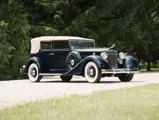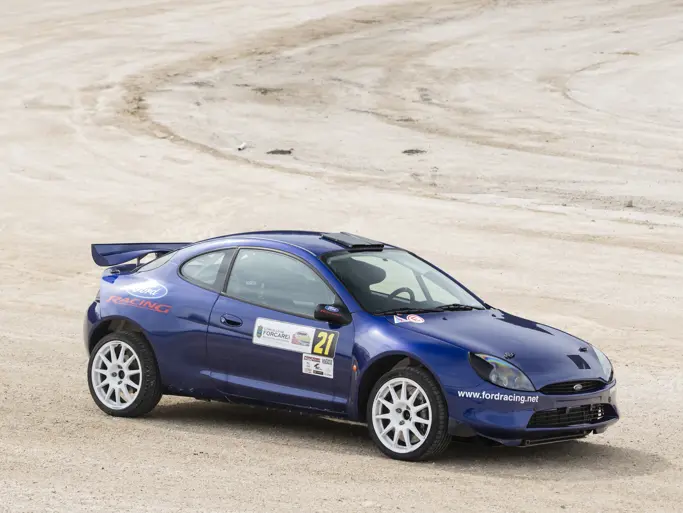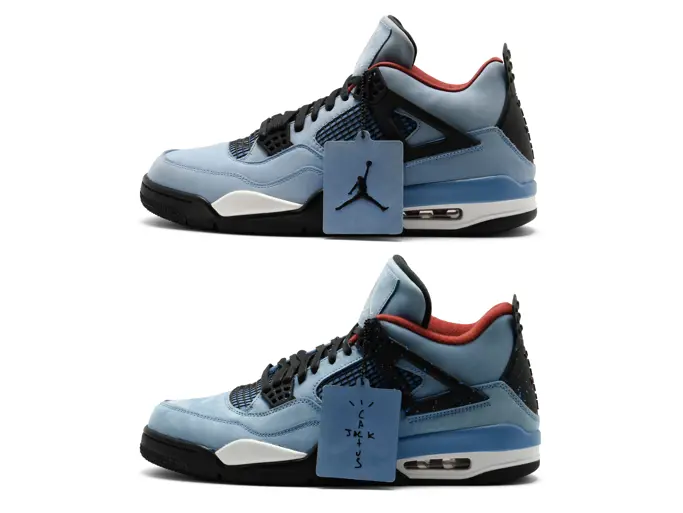For many, the 1934 model Packards, which the factory dubbed the Eleventh Series, represent the height of the company’s pre-war efforts. They were the final models with traditional open fenders, albeit gently skirted, and the upright radiator shell for which the company had become well-known. In addition, the chassis’ adjustable Ride Control suspension and Bijur automatic lubrication produced a car that was a dream to drive. Books have been written solely about this model year Packard, and it is widely considered among the most beautiful and purely enjoyable of all Classic Era production automobiles.
Auburn Fall 2014
1934 Packard Eight
{{lr.item.text}}
$181,500 USD | Sold
 | Auburn, Indiana
| Auburn, Indiana
{{internetCurrentBid}}
{{internetTimeLeft}}

Packard, the preeminent American luxury car marque, introduced its new Eleventh Series cars on August 21, 1933, but they were considered 1934 cars, and they remained in production through the following August, when the twelfth series cars of 1935 were launched. Each of the three models, the Eight, Super Eight and Twelve, were available in three wheelbases; an ambitious total of 41 different combinations of engines, wheelbases, and body styles; and 17 “catalog customs” bodied by coachbuilders LeBaron and Dietrich. Considered among the most traditionally beautiful today are the five-passenger convertible sedans, the body style offered here, which was available in all three series.
New fender contours graced the Eleventh Series, with the fronts curving downward nearly to the front bumper, and they were heavier than previous ones. Other changes were more subtle, such as the hood door handles, radiator caps, running boards, better upholstery, and a fuel filler that was integrated into the left taillamp. In the engine compartment, there was a new oil cooler and an oil filter was installed.
The company was now placing much emphasis on ride control and silencing. Advertising boasted that Packard Twelve owners could “drive a thousand miles a day without fatigue.” Packard’s share of the luxury market climbed to more than 40-percent in 1934. So convinced of the value of their product, Packard encouraged prospective buyers to ask for their hometown Packard dealers “Who’s Who” book. The tome included local residents who purchased Packards, and promoted contacting them for a candid assessment. From a period magazine advertisement, “We believe the verdict of your friends will make you eager to drive one of the new Packards. Drive it over the road you know by heart – test it in every way. And notice too, that this newest and finest of all Packards has the lines that have made Packard America’s most distinctive motorcar – lines that make Packard one car that the whole world recognizes.”
This splendid Convertible Sedan represents one of the most desirable of Packard’s eight-cylinder line in the company’s most beautiful year, and it is presented in a first-class manner. The Packard received a frame-off restoration from the acclaimed and award-winning Stone Barn Automobile Restorations approximately 10 years ago. The car is reported to remain absolutely perfect and finished in a jewel-like fashion. Stone Barn has many show-winning cars in their portfolio; among them are Pebble Beach Concours victors.
Richly presented in dark blue with tan cloth soft-top and perfect blue leather interior; the concours-quality finish is also found on the undercarriage and in the like-new engine bay which houses the 319.2-cid, 120-hp straight eight-cylinder engine. All chrome elements and the stunning wood trim is also portrayed as “perfect.” The dashboard is also like-new and the carpets fit perfectly. Among the many features are an AM radio, dual windshield wipers, dual side-mounted tires with full metal covers and pedestal mirrors, “goddess of speed” radiator ornament, rear trunk rack, painted wire wheels, chrome wheel trim rings and wide whitewall tires. Full Classic status from the Classic Car Club of America is bestowed on this beauty. Only 5,120 Packards in total were built in the 1934 model year, this is surely an example worthy of serious consideration.




